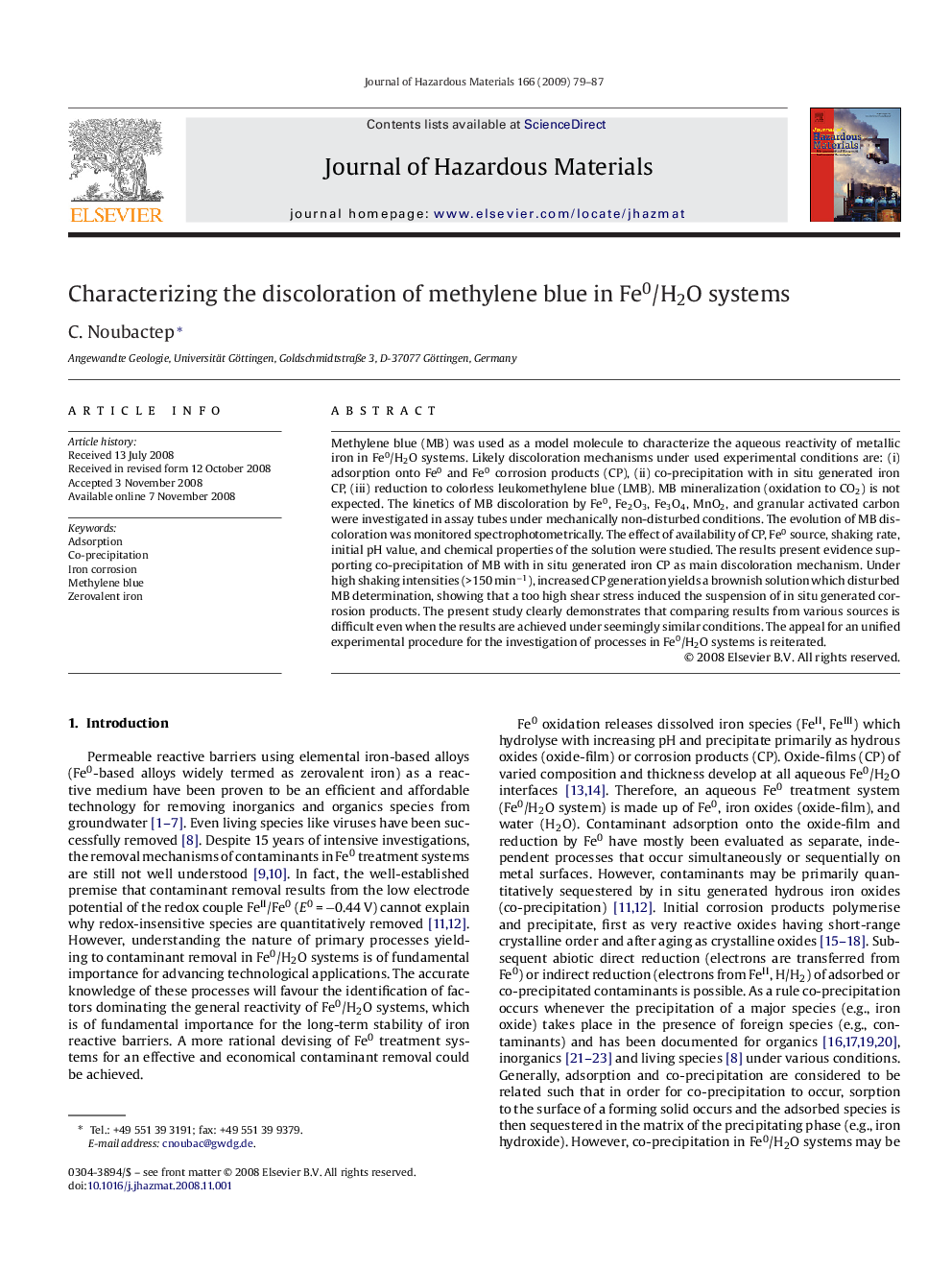| Article ID | Journal | Published Year | Pages | File Type |
|---|---|---|---|---|
| 581852 | Journal of Hazardous Materials | 2009 | 9 Pages |
Abstract
Methylene blue (MB) was used as a model molecule to characterize the aqueous reactivity of metallic iron in Fe0/H2O systems. Likely discoloration mechanisms under used experimental conditions are: (i) adsorption onto Fe0 and Fe0 corrosion products (CP), (ii) co-precipitation with in situ generated iron CP, (iii) reduction to colorless leukomethylene blue (LMB). MB mineralization (oxidation to CO2) is not expected. The kinetics of MB discoloration by Fe0, Fe2O3, Fe3O4, MnO2, and granular activated carbon were investigated in assay tubes under mechanically non-disturbed conditions. The evolution of MB discoloration was monitored spectrophotometrically. The effect of availability of CP, Fe0 source, shaking rate, initial pH value, and chemical properties of the solution were studied. The results present evidence supporting co-precipitation of MB with in situ generated iron CP as main discoloration mechanism. Under high shaking intensities (>150Â minâ1), increased CP generation yields a brownish solution which disturbed MB determination, showing that a too high shear stress induced the suspension of in situ generated corrosion products. The present study clearly demonstrates that comparing results from various sources is difficult even when the results are achieved under seemingly similar conditions. The appeal for an unified experimental procedure for the investigation of processes in Fe0/H2O systems is reiterated.
Related Topics
Physical Sciences and Engineering
Chemical Engineering
Chemical Health and Safety
Authors
C. Noubactep,
